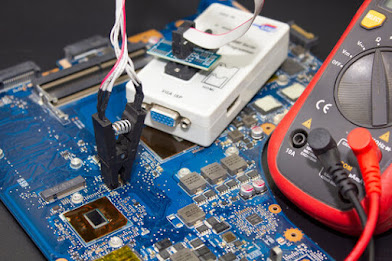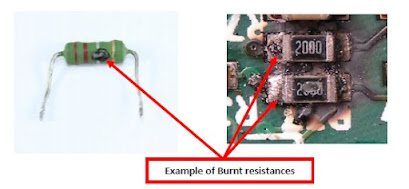Laptops
Introduction
Laptops were originally designed for niche markets, but today they are used in businesses
almost as much as regular PCs are. Laptops (also known as notebooks or portable computers) have integrated displays, keyboards, and pointing devices, which makes them easy to transport and easy to use in confined spaces.
There are plenty of other portable devices on the market today; including PDAs, Ultra-Mobile PCs, and more, but the bulk of the portable devices that you will troubleshoot is laptops. It is important to know the components of a laptop, how to safely remove hardware, the ports that surround the machine, and care and preventative maintenance of the laptop.
Evolution of the Portable Computer
Except for a short time at the very beginning, the personal computer revolution has always been accompanied by an equally innovative portable computer revolution. Indeed, in many ways, the evolution of portables has been much more dramatic than that of desktops. Whereas standard desktop computers have not changed markedly in their overall size in more than 20 years, portables have shrunk from the size of a suitcase to the point where one can fit one into a shirt pocket.
Pre-PC Portables
Some people date the beginning of the personal computer revolution as August 1981, when the original IBM PC was introduced. This landmark system was preceded, however, by a number of important computers, some of which were portable.
Luggables
Most early portable systems started out as nothing more than desktop PCs with integrated CRT displays, keyboards, and of course a handle. These systems weighed between 25 and 50 pounds and were the size of sewing machines or small suitcases. At first, this category was simply labeled as portable. But years later, when significantly smaller laptops appeared, these systems were branded as transportable or luggables.
It might be hard for current laptop users to believe this, but it was quite common in the 1980s to see businessmen lugging these 30 to 50-pound behemoths from one appointment to another.
For obvious reasons, however, these giant computers were soon supplanted by a new generation of portables that were significantly easier to carry.
IBM 5100
In September 1975 just months after the original personal computer was introduced under the Altair name IBM introduced its 5100 Portable Computer (see Figure ). Although it was hardly something anyone would happily carry, weighing in at 50 pounds, the 5100 holds the distinction of being the first portable computer in history, and very nearly the first personal computer, period.
The IBM 5100.
The Osborne 1
Although the IBM 5100 holds the distinction of being one of the first portables, its stratospheric price tag kept it from being the first popular portable. That distinction would have to wait until April 1981, when the Osborne 1 was introduced. Like the 5100, the Osborne was much heavier than any of today's portables, but it was only half the weight of its predecessor from IBM.
One of the most important characteristics of the Osborne was that it was not compatible with the IBM PC. That is quite understandable, however, because the Osborne appeared no less than four months before the IBM PC was announced.
Like many pre-PC systems, the Osborne used an 8-bit Z80 processor and ran the CP/M (Control Program for Microprocessors) by Digital Research. Unlike other systems, the Osborne had an ingenious design. In its mobile configuration, it resembled a thick suitcase or a sewing machine.
To use it, you would lay the system on its side and fold down its bottom panel, revealing a
keyboard, two floppy drives, and an incredibly small CRT display (see Figure)
The KayPro II
Yet another first for the Osborne was not so fortunate for its manufacturer. The design of the Osborne was so ingenious that it had the honor of being one of the first computers to spawn a clone. Not long after the appearance of the Osborne, a portable called the KayPro II debuted.
Figure. The KayPro II CP/M luggable
Laptops
The advent of non-CRT (cathode ray tube) flat panel displays allowed the development of the first "laptop" portable computers. Laptops can be characterized as portable systems with an integrated keyboard and flat-panel display in a clamshell design, where the display folds over the keyboard. Early flat-panel displays were smaller than they are today, so the early laptops had the display hinged near the middle of the system. As the display sizes grew, the display eventually became the same size as the keyboard and base of the system, resulting in the hinges being moved to the rear. Up until the mid-'90s, the size of a laptop was largely dictated by the keyboard and other components in the base. By 1995, screen sizes had grown such that the size of the system was then dictated by the display.






Comments
Post a Comment